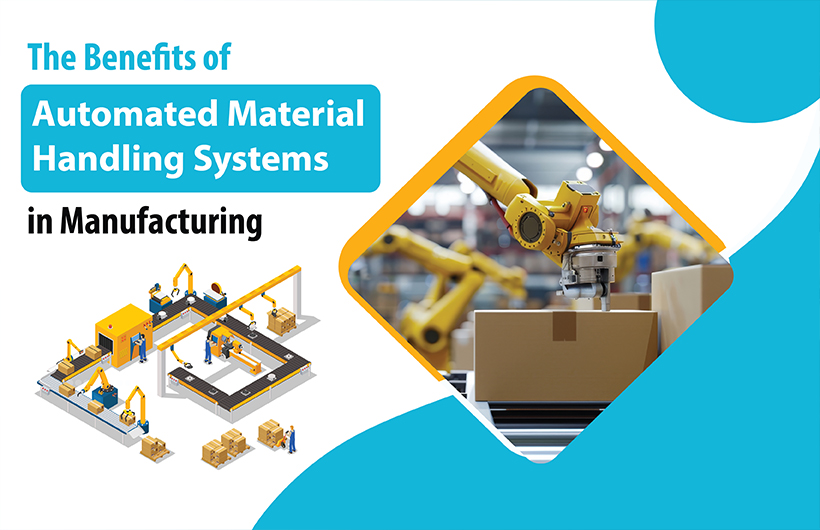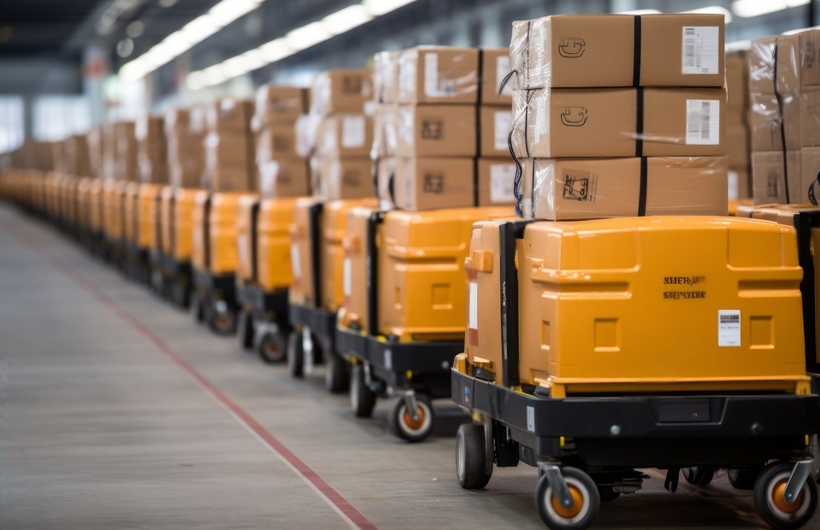The world of manufacturing is increasingly turning toward automation, and one area seeing significant advancements is material handling. Automated Material Handling Systems are designed to streamline material flow across production lines, warehouses, and distribution centers. By integrating automated systems, manufacturers can achieve significant improvements in efficiency, safety, and waste reduction.
We’ll discuss the key benefits of AMHS and provide actionable tips for optimizing material flow to further enhance productivity, reduce waste, and improve safety in manufacturing environments.
Key Benefits of Automated Material Handling Systems
Enhanced Productivity Automated systems can move materials faster and more consistently than manual labor. This reduces the time taken for material transfer between processes, eliminating bottlenecks and allowing for continuous production. With advanced technologies like robots and automation systems, manufacturers can automate repetitive tasks, leaving workers to focus on more complex and value-added activities.
Improved Safety Material handling often involves heavy lifting, moving hazardous substances, or navigating busy work environments. Automated systems reduce the need for manual handling of potentially dangerous materials, which minimizes the risk of workplace accidents. Technologies like autonomous mobile robots (AMRs) and automated guided vehicles (AGVs) can transport materials safely, preventing injuries caused by human error or fatigue.
Reduced Operational Costs Automation reduces the need for a large manual workforce, leading to cost savings over time. Additionally, automated systems are typically more energy-efficient, reducing power consumption. By eliminating errors caused by manual processes, manufacturers can also lower the cost associated with waste, damaged goods, and rework.
Greater Accuracy and Reliability AMHS are programmed to handle materials with precision, reducing errors in inventory management and order fulfillment. This leads to better product quality and more reliable deliveries, ensuring that manufacturers meet customer expectations and maintain strong supplier relationships.
Optimized Space Utilization Automated systems, such as vertical lift modules and automated storage and retrieval systems (AS/RS), maximize the use of available space in manufacturing facilities. This allows for higher storage density and more efficient material flow, without expanding the physical footprint of the operation.
Tips to Optimize Material Flow in Manufacturing
While AMHS can deliver significant benefits, optimizing material flow is essential to unlocking their full potential. Below are practical strategies manufacturers can implement:
1. Implement Lean Manufacturing Principles
- Focus on minimizing waste: Identify and eliminate any inefficiencies in the production process. Waste can include time delays, excess inventory, or unnecessary movements of materials.
- Use value stream mapping: This helps visualize the flow of materials and identify areas where automation can be introduced to reduce waste and improve efficiency.
2. Integrate AMHS with Warehouse Management Systems (WMS)
- Leverage data analytics: A well-integrated WMS can track material movement in real time, providing insights into bottlenecks and inefficiencies. Automated systems should be connected to your WMS to ensure real-time visibility and smooth coordination of material handling processes.
- Optimize picking and sorting: Use algorithms and real-time data to improve the speed and accuracy of picking and sorting materials. Automated systems can significantly reduce human error, ensuring materials are directed to the correct location at the right time.
3. Standardize Material Flow Processes
- Create consistent workflows: Define standard operating procedures (SOPs) for material handling to ensure consistency and efficiency. Automated systems perform best when there is a standardized process in place, as variability can cause delays or malfunctions.
- Use modular solutions: Modular systems allow for greater flexibility in handling various materials. This approach helps manufacturers adapt to different products or changes in demand without major disruptions.
4. Prioritize Safety with Automation
- Incorporate safety features: Automated systems should be equipped with sensors, cameras, and emergency stop mechanisms to avoid accidents. For example, AGVs can navigate safely through busy areas by using advanced obstacle detection technologies.
- Perform regular maintenance: Ensure all automated systems undergo routine inspections and maintenance to prevent malfunctions that could pose safety risks.
5. Create a Hybrid System
- Combine human labor with automation: In some cases, a hybrid system that blends manual and automated handling is the best solution. Certain tasks may require human judgment, while others are ideal for automation. A balanced approach can increase efficiency while reducing the risk of errors.
6. Train Employees on Automation Tools
- Invest in training programs: Equip your workforce with the knowledge to operate, monitor, and troubleshoot automated systems. When employees understand how to work alongside automation, the transition is smoother, and the benefits are realized more quickly.
Conclusion
Automated Material Handling Systems are revolutionizing the manufacturing industry by improving productivity, safety, and overall efficiency. However, to fully harness these benefits, manufacturers must carefully optimize their material flow processes. By adopting lean manufacturing principles, integrating AMHS with digital tools, and focusing on safety and training, companies can maximize their operational performance while reducing costs and waste.
If you are looking to improve your manufacturing processes, consider implementing automated material handling systems to stay competitive in today’s fast-paced industry. Contact Monarch Innovation Private Limited today!
Frequently Asked Questions (FAQs)
Q: How do Automated Material Handling Systems reduce operational costs?
A: AMHS reduce operational costs by streamlining processes, minimizing labor needs, and decreasing waste. Over time, these savings contribute to a strong ROI.
Q: What types of businesses can benefit from AMHS?
A: AMHS are beneficial for a wide range of industries, including automotive, pharmaceuticals, food and beverage, and consumer goods, among others.
Q: Are Automated Material Handling Systems difficult to implement?
A: While initial implementation may require careful planning and integration, many vendors offer support and training to facilitate a smooth transition.
Q: What are the long-term benefits of investing in AMHS?
A: Long-term benefits include sustained productivity increases, enhanced safety, improved product quality, and the ability to scale operations effectively.







